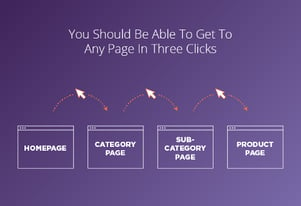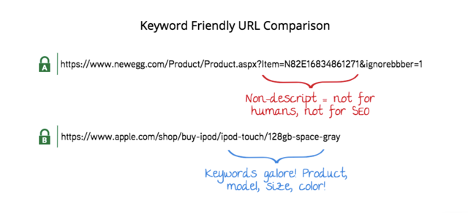Call Sales: +1 (833) 437-3835
Call Sales: +1 (833) 437-3835

The cost of clicks is rising and it’s becoming more and more expensive to get paid traffic to your web store. Thankfully, there are options for search engine optimization (SEO) that can help offset climbing costs. Have you considered ecommerce SEO strategies to help drive visitors to your site?
It’s still possible for your ecommerce site to get significant organic traffic. This just requires dedicating time to ecommerce SEO strategies that will get you ranking higher in search results on sites like Google and Bing.
Read on for some strategies to boost your organic search:
When someone turns to the Internet to search for something, the terms they use as they browse may differ from the ones they choose when they intend to make an actual purchase.
The challenge is to narrow down buyer intent keywords with at least a moderately high search volume.
If you don’t know what your customers are looking for, how can you expect to effectively optimize your pages?
Think about which keywords to focus on by considering the following:
The winning keywords will be the ones with a high search volume, clear buyer intent, strong product alignment, and low competition.
A good place to start with keyword research is by looking on Amazon. Type a keyword for your product into the search bar and see what suggestions come up, to give you an idea of what keywords to use.
The longer suggestions, or long-tail keywords, can be less competitive, so they can be really good for ranking high and scoring conversions.
Ideally, you want visitors to your website to be able to get to any page in three clicks or less.

The architecture of your ecommerce website is vital to shoppers. It shows them how to navigate and find what they are looking for on your site.
Your category pages are really beneficial to both improving the navigation on your site, as well as increasing conversions. Look at what keywords your competitors are using to rank and add them to your list where relevant.
Linking to product pages from high-authority pages is a sure-fire way to rank higher. Use the keywords mentioned above to urge visitors to click-through to your products.
Using promotional terms like “sale,” “X% off,” or “free shipping” in your title tags can attract the reader’s attention and result in more click-throughs. The click-through rate (CTR) is a factor likely taken into account by Google when it comes to ranking.
The same can be said for your meta descriptions. Including compelling and attractive language in your meta descriptions is likely to persuade browsers to click through to your site, and therefore boost your ranking placement.
Pay special attention to your on-page content in order to assure it is the required length to rank.
Another important consideration for page optimization is URL content. Instead of a bunch of numbers and letters all jumbled up together in your URLs, why not create specific URLs that include your keywords? Let shoppers know exactly what a product page is about before clicking on it. Aside from letting shoppers know, you also give Google a better idea of what the page includes and how the page relates to the other pages on your site.

Google makes speed a priority when crawling through websites. This is one of the very few things they have publicly stated when sharing information about how their algorithm works.
It’s not just for SEO purposes that you should be mindful of your page loading time though. Research shows that 57% of online customers will leave a site if it doesn’t load after only three seconds, and 80% of them will never return. For this ecommerce SEO strategy, don’t just consider your rankings, but also your conversions and your bottom line.
One of the easiest ways in which you can speed up your site is to work on your product images. Make sure to optimize them to allow your pages to load quicker by implementing the tactics below:
It’s good practice to make your site structure as easy to understand as possible so that Google can index it quicker.
This typically means having fewer pages so you can organize your site better. In turn, Google can also understand how the pages work together in order to index and crawl them.
The thing to remember with more pages is that they usually mean having duplicate content and duplicate content is something that Google’s algorithm does not appreciate. Typically, when Google sees two pages with the same content, it’s not sure which of them to rank so it doesn’t rank either of them.
Delete or de-index pages that haven’t been bringing in conversions or revenue for you lately, otherwise merge them with other pages, where relevant.
Higher rankings on search engines are the key to driving growth for your ecommerce web store. Optimizing your product content when you have hundreds or maybe even thousands of products can be tedious and time-consuming, not to mention prone to errors and duplicate content.
Product Information Management (PIM) gives you the power to optimize and manage all your product content in one overview for multiple channels. By having a single source of all your product information, you can then focus on optimizing your product titles, pages, and other content in order to ultimately rank higher. Consider implementing a PIM tool to eliminate having to manage your product information manually.
Optimizing for ecommerce SEO strategies is not always a simple feat. But in the age of paying for traffic to your web store, optimizing for organic search can be well worth your time and effort.

Sophia is the communication manager at Plytix, a B2B SaaS company helping retailers of all sizes manage their product data and get it to market faster and smarter.